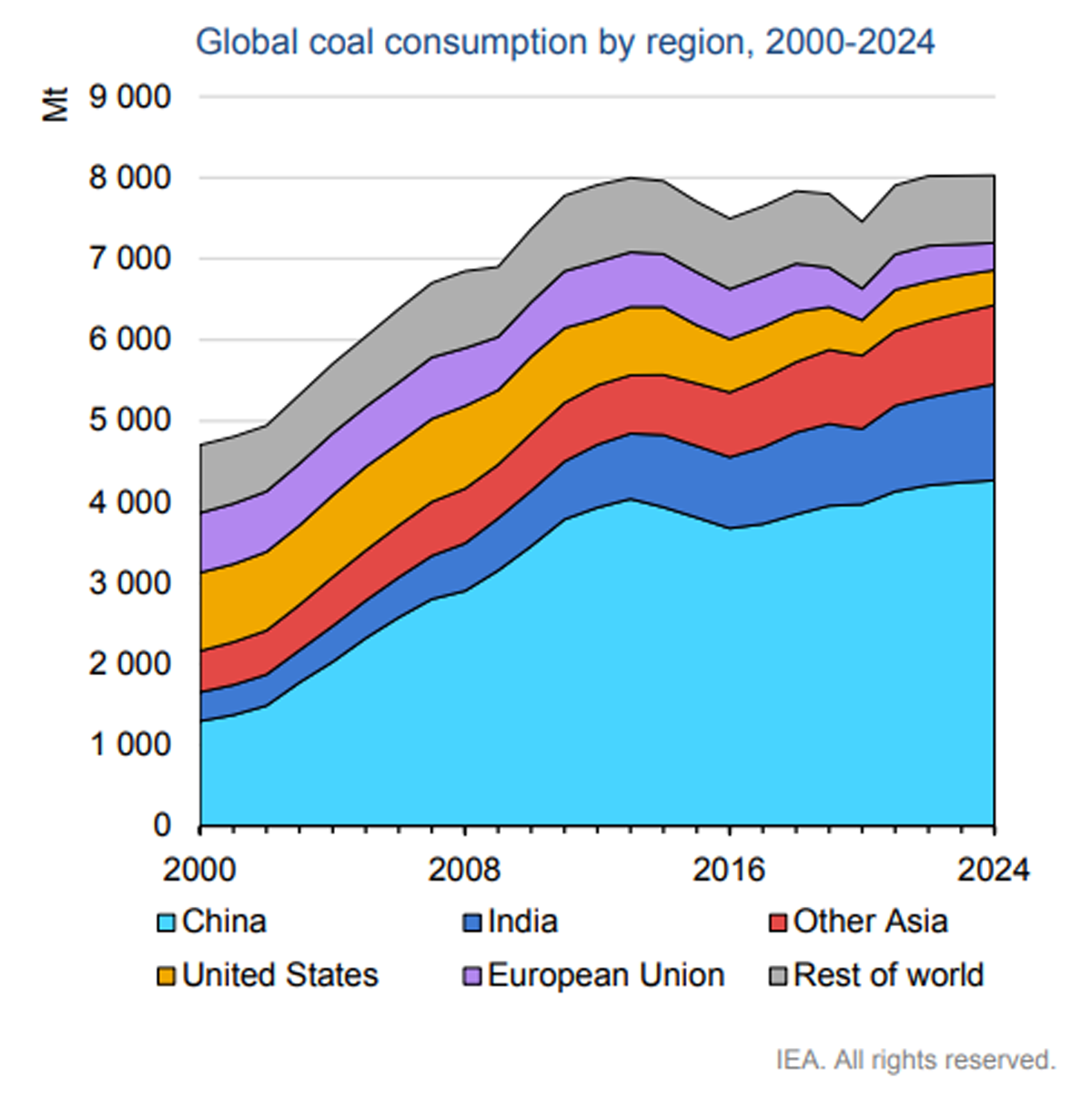By Andy May
It’s official, the IEA believes that coal-powered electricity generation will rise 9% in 2021 to an all-time high, once the final numbers are in. For the details see their new report here. It is not paywalled.
The rise is driven by China and India, these countries account for two-thirds of global coal consumption. The IEA expects coal use in China and India to grow dramatically in 2022 driving global consumption to a new record of 8,025 million tonnes. They also expect coal production to plateau after 2022, but they always predict that. The problem is renewable energy growth cannot keep pace with global electricity demand growth. Possibly, natural gas production and nuclear could, but will it happen?
In 2021, coal production worldwide failed to keep pace with exploding demand due to financing and regulatory restrictions, causing Newcastle coal futures to rise from less than $100/tonne in January 2021 to over $250/tonne in October 2021. Currently they are $203/tonne. Rising prices should stimulate more coal production, we’ll see. The pressure on governments to limit coal mining and the pressure on banks to limit lending to coal companies is high.
Coal power generation also increased in the U.S. and Europe, but these increases were small and not expected to last. The growth in China and India is what is driving coal markets around the world. China’s share of global coal consumption was 53% in 2020, and India’s was 12%, since their use of coal is rising significantly, declines in the rest of the world don’t matter much. See Figure 1.

Figure 1: IEA global coal consumption by region.
Given the large number of people in the world that have no reliable source of electricity, it seems more likely that coal use will continue to increase, the declines in the U.S. and Europe are tiny in comparison. However, the desire to move away from coal is likely to increase demand and prices for natural gas, and it may spur the construction of more nuclear power plants. One thing is clear, the future is not in wind and solar.
Worldwide coal production declined about 5% in 2020, with large declines in the United States and the European Union. China accounted for about 50% of the total production. Coal production should increase about 5% in 2021, once the final numbers are in. Coal stocks are depleted and will need to be replenished, especially in China, which suffered energy shortages over the past year. So, Chinese production should increase in 2022, but it is not expected to keep up with growth. As a result, Chinese imports of coal will increase, driving up coal prices. Production should set an all-time record for the year. Coal production is expected in increase rapidly in India, see Figure 2.

Figure 2. IEA Global coal production.
Author

Biography
Andy May is a writer, blogger, and author living in The Woodlands, Texas; and enjoys golf and traveling in his spare time. He is the author of two books on climate change issues and one on Kansas history. Andy is the author or co-author of seven peer-reviewed papers on various geological, engineering and petrophysical topics. He retired from a 42-year career in petrophysics in 2016. You can find many of his posts on the popular climate change blog Wattsupwiththat.com, where he is an editor. His personal blog is andymaypetrophysicist.com.
